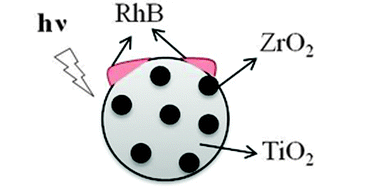Selective photo-degradation of Rhodamine B over zirconia incorporated titaniananoparticles: a quantitative approach
Abstract
This study attempts to elucidate the selectivity of

* Corresponding authors
a
Department of Applied Chemistry, National Chia Yi University, Chiayi 600, Taiwan, ROC
E-mail:
csyang@mail.ncyu.edu.tw
Fax: +886-5-271-7901
Tel: +886-5-271-7962
This study attempts to elucidate the selectivity of

 Please wait while we load your content...
Something went wrong. Try again?
Please wait while we load your content...
Something went wrong. Try again?
C. Ou, C. Yang and S. Lin, Catal. Sci. Technol., 2011, 1, 295 DOI: 10.1039/C0CY00019A
To request permission to reproduce material from this article, please go to the Copyright Clearance Center request page.
If you are an author contributing to an RSC publication, you do not need to request permission provided correct acknowledgement is given.
If you are the author of this article, you do not need to request permission to reproduce figures and diagrams provided correct acknowledgement is given. If you want to reproduce the whole article in a third-party publication (excluding your thesis/dissertation for which permission is not required) please go to the Copyright Clearance Center request page.
Read more about how to correctly acknowledge RSC content.
 Fetching data from CrossRef.
Fetching data from CrossRef.
This may take some time to load.
Loading related content
